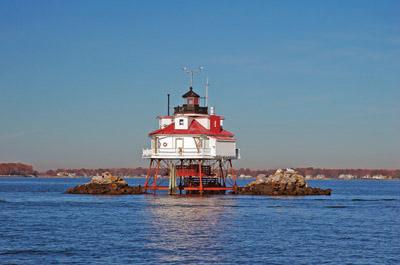EPA Science Matters Newsletter: Partnerships to Protect Chesapeake Bay (Published January 2014)
EPA researchers and partners are working to reduce pollution and restore the health of Chesapeake Bay.

EPA scientists have joined forces with a variety of organizations to support research to help protect the health and sustainability of Chesapeake Bay, the largest estuary in the United States and an important economic resource.
The Agency is a partner of the Chesapeake Bay Program, a unique regional collaboration that has been working to restore Chesapeake Bay and the surrounding watershed since 1983. The program was formed in response to a study commissioned by Congress detailing how excess nutrient pollution was leading to the degradation of the Bay ecosystem.
Since that time, EPA scientists and Bay Program partners have been working to continually assess the health of Chesapeake Bay and its rivers in order to inform decision makers so they can work to improve the Bay. In 2010, the Agency established the Chesapeake Bay Total Maximum Daily Load, a comprehensive “pollution diet” to restore clean water in the Bay and surrounding streams, creeks and rivers.
A Total Maximum Daily Load, often referred to by the acronym “TMDL,” is the maximum amount of pollution a water body can receive and still meet state water quality standards set to ensure waterways are safe for people to swim in and consume fish from. Yearly TMDLs are set for nitrogen, phosphorus and sediment. The Bay TMDL is an essential part of the larger plan to ensure that all actions to control Bay pollution are in place by 2025, with practices in place by 2017 to meet 60 percent of the necessary pollution reductions.
“The state-federal Chesapeake Bay Program partnership has greatly benefited from the work of EPA scientists,” said Rich Batiuk, Associate Director for Science, Analysis and Implementation at the Chesapeake Bay Program Office. “For example, Delaware, Maryland, Virginia, and the District of Columbia have Chesapeake Bay dissolved oxygen water quality standards in their regulations based on years of outstanding research carried out in EPA’s Narragansett, RI lab in the 1990s. And more recently, optimization modeling by EPA scientists is being used as the basis for policy analysis leading to Chesapeake Bay watershed nutrient trading guidelines. The Partnership puts EPA research findings like that to work restoring the Bay.”
EPA STARS: Supporting Bay Research
EPA’s Science to Achieve Results (STAR) grant program engages the nation’s best (nongovernment) scientists and engineers to complement the Agency’s own intramural research.

As part of that program, Federal, state and local officials gathered at Bladensburg Waterfront Park, MD in September 2012 to announce a $691,674 U.S. Environmental Protection Agency Sustainable Chesapeake Grant awarded to the University of Maryland.
“EPA’s grant of $700,000 to the University of Maryland will enable the university and local communities to form a collaborative partnership that will help develop ways to better identify runoff hotspots and improve overall stormwater management,” said U.S. Senator Benjamin Cardin, during the ceremonies. Cardin is chairman of the Water and Wildlife Subcommittee of the Environment and Public Works Committee.
The Agency-supported project will focus on improving the management of stormwater in Howard County Maryland’s Wilde Lake watershed and the District of Columbia’s Watts Branch watershed. It will help community members identify stormwater problem areas and obstacles they face, increase the use of best management practices, and design more locally-driven solutions.
University of Maryland Environmental Science and Technology Professor Paul Leisnham, Ph.D., who is serving as the Principal Investigator for the project, says “the team expects that the tool will prove useful for watershed managers, but the education component is extremely important as well. Throughout the study the team will work with community members to educate them on water resources and best management practices.”
The grant follows a related 2011 EPA STAR award of almost $2.5 million to Penn State University to open an interdisciplinary research center where scientists are studying how decisions are made at multiple levels to improve the design and implementation of innovative, sustainable stormwater management systems.
